thedaemonarchivist
14 posts
Nicky, he/him
Last active 3 hours ago
Don't wanna be here? Send us removal request.
Note
hii would you do an analysis for a muntjac deer? im thinking southern red muntjac but it doesnt need to be that specific :) tysm!
The Southern red muntjac (Muntiacus muntjak) is a deer species native to Southeast Asia. Some characteristics of a southern red muntjac daemon might be:
Adaptable [1]
Communicative [2]
Direct, honest
Alert, wary, anxious [3]
Perceptive
Independent, solitary [4]
Social [5, 6]
Possessive [6, 8]
Not picky, flexible [7]
Defensive, competitive [8]
Violent [9]
Cautious, guarded [10]
Practical, sensible [10]
Smart

The Southern red muntjac has a short but very soft, thick, dense coat that is more dense in cooler regions.
The southern red muntjac is also called "barking deer" due to the bark-like sound that it makes as an alarm when danger is present.
Southern red muntjacs are highly alert creatures.
Other than during the rut (mating season) and for the first six months after giving birth, the adult muntjac is a solitary animal.
Southern red muntjacs are polygamous animals.
Adult southern red muntjacs exhibit relatively large home range overlap both intersexually and intrasexually, meaning that strict territorialism does not occur but some form of site-specific dominance exists.
Muntjacs are distinguished from other even-toed ungulates in showing no evidence of a specific breeding season within the species.
Males often fight between one another over over territories, sufficient vegetation, and for primary preference over females.
When fighting, they use their short antlers and an even more dangerous weapon, their canines.
Females usually give birth in dense growth so that they are hidden from the rest of the herd and predators.
5 notes
·
View notes
Note
I was wondering if you would be open to doing an analysis of a swan? Any species of white swan is ok.
The mute swan (Cygnus olor) is a species of swan and a member of the waterfowl family Anatidae. Some characteristics of a mute swan daemon might be:
Loyal [1]
Habitual, frugal [1]
Passionate, spirited
Adaptable [2]
Private [3]
Blunt, frank, direct [4]
Quiet, serious
Proud
Aggressive, defensive, protective [5]
Forceful, efficient [6]
Confident, hostile [7]

Mute swans are monogamous and often reuse the same nest each year, restoring or rebuilding it as needed.
Mute swans feed on a wide range of vegetation, both submerged aquatic plants which they reach with their long necks, and by grazing on land.
Mute swans are usually strongly territorial with just a single pair on smaller lakes, though in a few locations where a large area of suitable feeding habitat is found, they can be colonial.
The mute swan is less vocal than the noisy whooper and tundra swans; they do, however, make a variety of sounds, often described as "grunting, hoarse whistling, and snorting noises."
Mute swans can be very aggressive in defence of their nests and are highly protective of their mate and offspring.
Swans will kill intruders into their territory, both other swans, and geese and ducks, by drowning, climbing onto and pecking the back of the head and forcing the other bird underwater.
The familiar pose with the neck curved back and wings half raised, known as busking, is a threat display.
8 notes
·
View notes
Note
I would be very curious of yours thoughts about the american pine marten...
The American marten (Martes americana), also known as the American pine marten, is a species of North American mammal and a member of the family Mustelidae. Some characteristics of an American marten daemon might be:
Compliant, tolerant [1]
Opportunistic [2]
Polite, obliging, tactful [3]
Prepared [4]
Frantic, scattered
Sensitive
Private, reserved [5]
Curious, playful
Ambitious [6]
Sly, tricky
Disloyal, flaky [7]

American marten may be nocturnal or diurnal.
American marten are opportunistic predators, influenced by local and seasonal abundance and availability of potential prey.
American marten may be important seed dispersers; seeds generally pass through the animal intact, and seeds are likely germinable.
Where deep snow accumulates, American marten prefer cover types that prevent snow from packing.
American marten are solitary except during the mid-summer breeding season.
American martens are somewhat arboreal (tree dwelling).
American martens rarely reuse resting sites and will travel throughout their territory without making use of frequent paths or trails.
7 notes
·
View notes
Note
Would you be interested in doing an analysis of ravens?
The common raven or northern raven (Corvus corax) is a large all-black passerine bird. Some characteristics of a common raven daemon might be:
Loyal, dedicated [1]
Vigilant, aware, paranoid [2]
Bold, assertive, loud [3]
Adaptable, hardy [4,9]
Serious
Smart, sly, savvy [5]
Playful, cheeky [6]
Affectionate
Intuitive [7]
Expressive, manipulative [8]
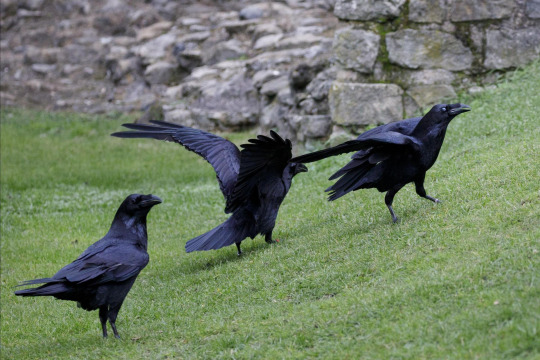
Common ravens usually travel in mated pairs, although young birds may form flocks.
Ravens are quite vigorous at defending their young and are usually successful at driving off perceived threats.
Common ravens attack potential predators by flying at them and lunging with their large bills.
Common ravens are omnivorous and highly opportunistic: their diet may vary widely with location, season and serendipity.
The brain of the common raven is among the largest of any bird species.
Juvenile common ravens are among the most playful of bird species. They have been observed to slide down snowbanks, apparently purely for fun. They even engage in games with other species, such as playing catch-me-if-you-can with wolves, otters and dogs.
Common ravens are one of only a few wild animals who make their own toys. They have been observed breaking off twigs to play with socially.
Like other corvids, the common raven can mimic sounds from their environment, including human speech. Non-vocal sounds produced by the common raven include wing whistles and bill snapping.
Common ravens live in a wide array of environments but prefer heavily contoured landscapes.
8 notes
·
View notes
Note
Would love to hear your take on stoat dæmons!
The stoat (Mustela erminea), also known as the Eurasian ermine or ermine, is a species of mustelid native to Eurasia and the northern regions of North America. Some characteristics of a stoat daemon might be:
Opportunistic, sly, lazy [1]
Shrewd, discreet, savvy
Sensible [2]
Docile, spineless, submissive [3]
Adaptable, hardy [4]
Ambitious, determined, stubborn [5]
Efficient, forceful [6]
Quiet [7]
Blunt, honest [7]
Nervous, paranoid, alert [8]
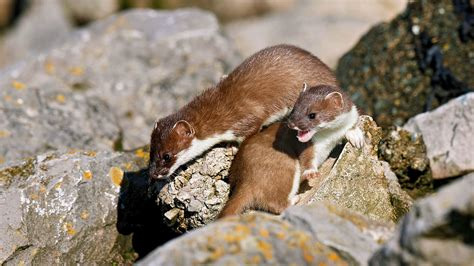
The stoat does not dig its own burrows, instead using the nest chambers of the rodents it kills.
The skins and underfur of rodent prey are used to line these nest chambers.
Submissive stoats express their status by avoiding higher-ranking animals, fleeing from them or making whining or squealing sounds.
The stoat also inhabits old and rotting stumps, under tree roots, in heaps of brushwood, haystacks, in bog hummocks, in the cracks of vacant mud buildings, in rock piles, rock clefts, and even in magpie nests.
The stoat regularly preys on larger rodent and lagomorph species, and takes on individuals far larger than itself.
The stoat seeks to immobilise large prey such as rabbits with a bite to the spine at the back of the neck.
The stoat is a usually silent animal, but can produce a range of sounds similar to those of the least weasel.
The stoat regularly stands alert on the hind legs.
7 notes
·
View notes
Note
Would you be able to do an analysis for a white-nosed coati? :-) ty!!
The white-nosed coati (Nasua narica), also known as the coatimundi, is a species of coati with small ears and a long, pointed snout. Some characteristics of a white-nosed coati daemon might be:
Bold, individualistic
Cliquish
Habitual, tolerant, relaxed [1]
Docile [2]
Opportunistic, intelligent, curious [2]
Steady, intuitive [3]
Adaptable [4]
Determined, resilient, stubborn [5]
Efficient [6]
Easy-going, cooperative [7]
Expressive, affectionate, playful [8]
Loyal
Forgiving

Coatis are diurnal and do much of their foraging during the day, with nights spent in treetops sheltered from most predation.
Coatis are omnivores and forage mostly on the ground for small vertebrates, carrion, insects, snakes and eggs.
Coatis can climb trees easily and use their tail for balance.
Coatis will occupy many different types of habitat, from tropical lowlands to high-altitude forests.
Coatis will travel up to 2000 meters in a single day in a quest for food.
When hunting, coatis will force vertebrates to the ground with their paws and kill by a bite to the head.
Coatis are known pollinators of the balsa tree.
Coatis are very vocal, and often engage in play behaviour in the wild.
12 notes
·
View notes
Note
What form does you Daemon take, if you don't mind me asking
She's a black rat snake :)
8 notes
·
View notes
Text
The eastern kingbird (Tyrannus tyrannus) is a large tyrant flycatcher native to the Americas. Some characteristics of an eastern kingbird daemon might be:
Bold [1]
Protective [2]
Aggressive [2]
Dutiful, loyal [2]
Anxious
Dogged, stubborn
Patient [3]
Precise [3]
Vain [4]
Territorial [5]
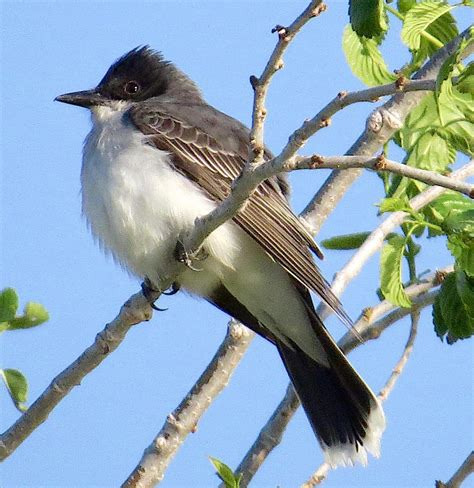
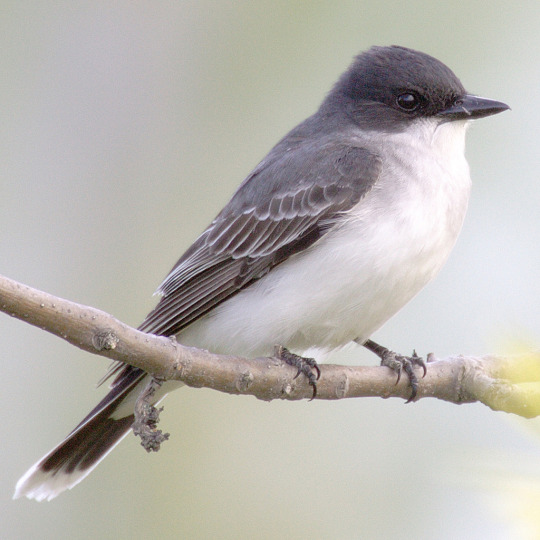
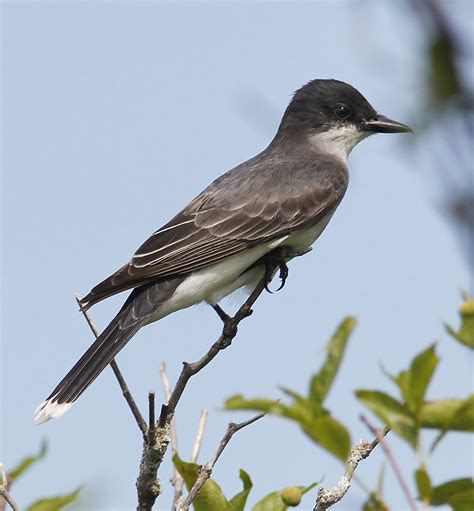
Eastern kingbirds breed in open habitats such as yards, fields, pastures, grasslands, or wetlands, and are especially abundant in open places along forest edges or water.
Eastern kingbirds aggressively defend their territory, even against much larger birds.
Eastern kingbirds wait on an open perch and fly out to catch insects in flight, sometimes hovering to pick prey off vegetation.
Preen frequently, females more than males.
Territorial during breeding season.
#eastern kingbird#tyrannus tyrannus#genus: tyrannus#family: tyrannidae#order: passeriformes#class: aves#daemon analysis#daemonism
8 notes
·
View notes
Note
Could I request a tiger analysis please?
The TIGER (Panthera tigris) is the largest living cat species native to Asia. Largely solitary, tigers are tough, resilient, and steady, somewhat habitual and remarkably stubborn. Tigers are highly adaptable and resourceful despite largely living in forest habitats and occupying home ranges: they are powerful swimmers and capable climbers (though less so than many other cats due to their size). The tiger is an apex predator which preys mainly on ungulates such as deer and wild boar, which it takes by ambush: these cats are patient, methodical and practical, but obsessive, dedicated and highly devoted. Distinctive black or dark brown stripes mark the tiger's fur; this feature is advantageous for camouflage in vegetation with vertical patterns of light and shade, such as trees, reeds and tall grass: tigers are calm and relaxed, but bold, and likely manipulative. Tigers are normally silent but can produce a wide range of vocalisations, including growling, snarling and hissing. In friendlier encounters, tigers will prusten, a soft, low-frequency snorting sound similar to purring. Tigers also communicate through their tails and ears, facial expressions, scent marking and bunting, or rubbing against each other's bodies: these cats are remarkably expressive, communicative and playful. Tigers are independent with loose ties, confident and self-assured, sensitive and perceptive, likely courageous and opinionated, but tactful, prudent and not particularly bullying or hostile.
The SNOW-WHITE TIGER is a colour morph with extremely faint stripes and a pale sepia-brown ringed tail: these cats are more avoidant, solitary and likely guarded.
The WHITE TIGER is a colour morph with a white coat and sepia-brown stripes. These cats are bolder, highly spirited and likely more confident.
The GOLDEN TIGER is a colour morph with pale golden fur and reddish-brown stripes: these cats are likely more calm, relaxed, patient and highly indulgent.

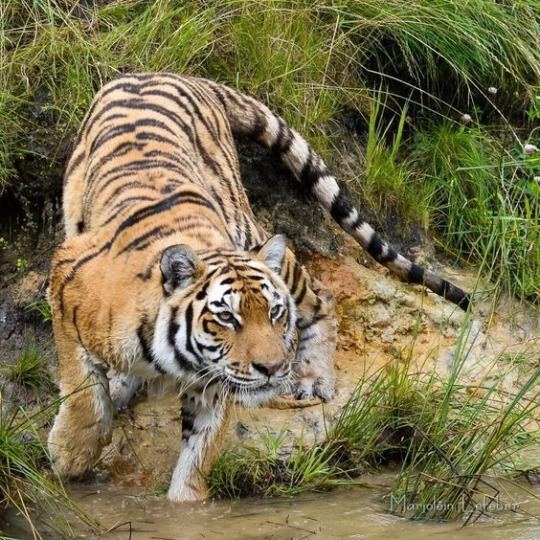

#tiger#panthera tigris#genus: panthera#family: felidae#order: carnivora#class: mammalia#daemon analysis#daemonism
18 notes
·
View notes
Note
Hi!!!
Could you do some orca and/or Eurasian otter analysis? 👀
The ORCA (Orcinus orca), or killer whale, is a toothed whale that is the largest member of the oceanic dolphin family. Orcas are highly social, cooperative and close-bonding, confident and assertive, but adaptable and not particularly picky or fussy. The orca has excellent eyesight and hearing and a good sense of touch: these animals are highly perceptive, sensitive and aware, tactile, hands-on and practical. Orcas disable their prey before killing it and are able to detect the location and characteristics of prey in the water by emitting clicks and listening for echoes: these animals are shrewd, intuitive and somewhat cautious. Orcas frequently engage in surface behaviour like breaching and tail-slapping: they are playful and highly active. With strong teeth, distinctive pigmentation and jaws that exert a powerful grip, orcas are tough, assertive and bold, but not particularly controlling or manipulative. These animals are impulsive and somewhat reckless, but highly determined and dedicated, and may beach temporarily to grab prey before wriggling back to sea. Orcas learn to copy behaviours from one another: these animals are proficient, capable and quick to learn. Orcas do hunt seabirds but are more likely to kill and leave them uneaten: they are heedless, not frugal and perhaps wasteful. These animals are hostile and somewhat bullying, and will engage in surplus killing, that is, killing that is not designed to be for food. Orcas are confident, likely bullish, expressive and highly communicative.



#orca#orcinus orca#genus: orcinus#family: delphinidae#order: cetartiodactyla#class: mammalia#daemon analysis#daemonism
26 notes
·
View notes
Note
Love that there is a new dæmon analysis blog! I was wondering if you would be open to doing a dæmon analysis for either an Eastern Kingbird or an Asian Golden Cat?
The ASIAN GOLDEN CAT (Catopuma temminckii) is a medium-sized wild cat native to the northeastern Indian subcontinent. In the wild, these cats are territorial and solitary with strong boundaries, avoidant, likely introverted, and disloyal. Asian golden cats are capable of bringing down prey much larger than themselves, making them hardy and tough, fierce and highly ambitious. These felines kill small prey with the nape bite typical of cats: they are highly efficient and focused, but cautious, and will pluck birds larger than pigeons before feeding. Asian golden cats have a wide range of vocalisations, including hissing, spitting, meowing and purring, growling and gurgling: these cats are highly communicative and expressive, but tactful. The Asian golden cat inhabits some of the fastest developing countries in the world, where it is increasingly threatened by habitat destruction following deforestation, making them adaptable, resilient and enduring. These cats are somewhat avoidant, able to climb trees when necessary, but highly protective, with small, sheltered litters of 1 to 3 kittens. The activity of Asian golden cats follows a predictable pattern: they are are habitual despite their adaptability. These cats are open, unassertive and somewhat humble, known to be docile and tranquil in captivity, and become uncharacteristically ruthless and aggressive when under stress.
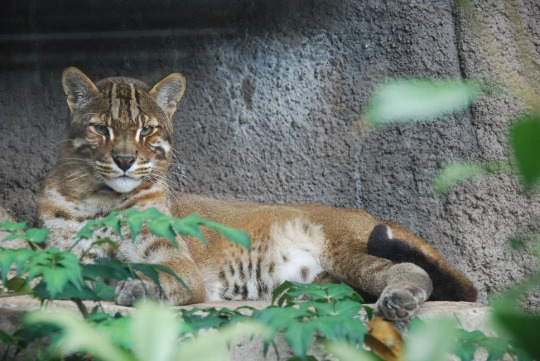
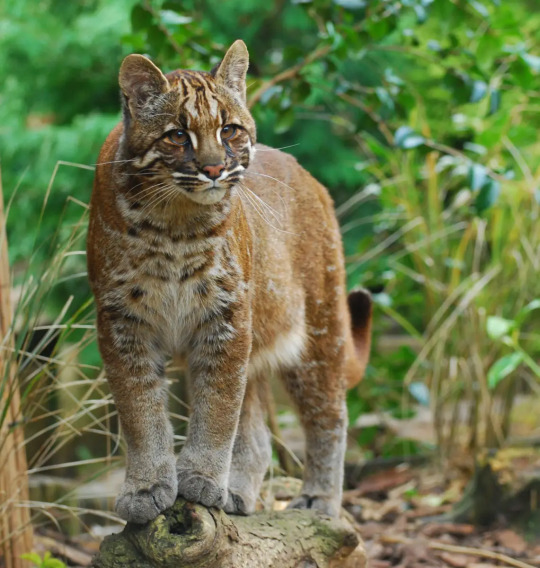
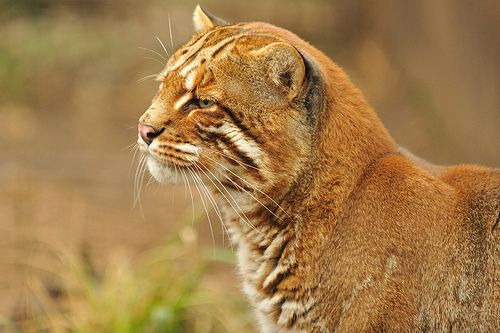
#asian golden cat#catopuma temminckii#genus: catopuma#family: felidae#order: carnivora#class: mammalia#daemon analysis#daemonism
6 notes
·
View notes
Note
Hey. Hey. Monarch butterfly analysis.
The MONARCH BUTTERFLY (Danaus plexippus) is a milkweed butterfly with distinctive black and orange wings. Monarch butterflies are highly extroverted and group-orientated, likely uncomfortable when alone, but not particularly fainthearted. These butterflies migrate huge distances and can survive highly destructive weather events, making them hardy, resilient, and adaptable. The monarch uses toxins as a passive defense against predators: these butterflies are heavily conflict avoidant, fairly passive, compliant and compromising, tolerant, and docile. Tactile setae on the monarch's body are used in orientation during flight and to differentiate between plants: monarch butterflies are hands-on, tactile and practical at heart. These butterflies are fickle, curious and highly impulsive, but not particularly devoted, with a tendency to wander from their breeding or food habitat. Sensitive and aware, monarch butterflies are strongly perceptive, attuned to both regular seasonal changes and subtle mating cues. These animals strive to maintain control of themselves and are straight-forward and honest, somewhat disloyal, cautious, wary, and not likely to be manipulative.
The WHITE MONARCH (Danaus plexippus plexippus) is a rare, greyish white colour morph of the monarch butterfly: these butterflies are mildly more avoidant, flighty and disloyal.


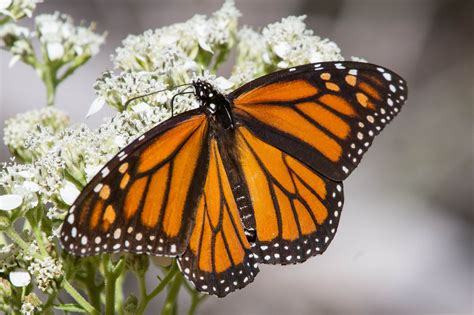
#monarch butterfly#danaus plexippus#genus: danaus#family: nymphalidae#order: lepidoptera#class: insecta#daemon analysis#daemonism
8 notes
·
View notes
Text
The SAND CAT (Felis margarita) is a small wild cat that inhabits sandy and stony deserts far from water sources, the only felid to appear exclusively in desert habitats. Largely solitary, sand cats are hardy and emotionally tough, likely reserved or private, but not particularly assertive and likely to be docile. The sand cat's short ears set low on the head aid in the detection of prey moving underground: these animals are highly perceptive and aware. Long hair covers the soles of a sand cat's paws and insulates the foot pads while moving over hot sand; this feature makes the cat's tracks obscure and difficult to identify: sand cats are tough and enduring, focused and persistent, highly specialised, and likely secretive. With sandy to light grey fur well matched to desert habitats, the sand cat's camouflage protects it from predators: these animals are guarded and passive, likely manipulative and avoidant, gentle, retiring, and somewhat apathetic. Sand cats are habitual, resting in underground dens during day and hunting at night. These animals are highly cautious and strongly determined, surviving indefinitely on moisture gained from their prey rather than risk vulnerability at watering holes. Methodical and efficient, sand cats are disciplined, dutiful and diligent, and will bury a carcass too large to eat in one sitting rather than waste a possible meal. These animals are loose-bonding and somewhat detached, quietly confident and self-assured, patient and tolerant, but not particularly trusting, and not likely to be loyal or affectionate.
The SAHARAN SAND CAT (Felis margarita margarita) is smaller in size with brighter, more yellow fur with more pronounced markings and 2-6 rings on the tail: these cats are mildly more expressive, dramatic, and passionate.
The TURKESTAN SAND CAT (Felis margarita thinobia) is larger in size with a darker, more greyish coat with less pronounced markings and only 2-3 rings on the tail. These cats are likely more calm, guarded and apathetic, and highly indulgent and relaxed.
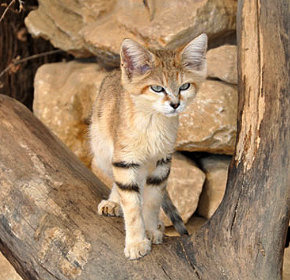


#sand cat#felis margarita#genus: felis#family: felidae#order: carnivora#class: mammalia#daemon analysis#daemonism
33 notes
·
View notes
Text
Howdy!!
This blog is my personal archive of daemon analyses and a space to discuss the ins and outs of how daemons work. Asks are always open, suggestions are welcomed and encouraged!!
I take suggestions for animals to make analyses for, as well as submissions for (fictional) character form finding :3
8 notes
·
View notes